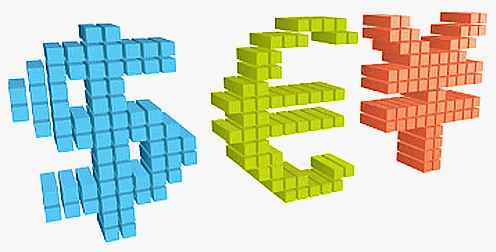Accredited InvestorsAltcoinAnatoli UnitskyAnti-Money Laundering (AML) In CryptoAPIArbitrageArtCoin TokenArticle DirectoryASICAuction Terminology GlossaryBasics of Stock Market InvestingBear MarketBest Crypto Payment Provider In the WorldBitcoinBlockchainBlockchain ConfirmationBlockchain Consensus MechanismBlockchain ForkBlockchain GlossaryBored Ape Yacht ClubBuild a Business That OutperformsBull MarketBuying SkyWay SharesByzantine Fault Tolerance (BFT) ExplainedCasascius CoinCentral Bank Digital Currency (CBDC)Centralized Crypto ExchangeCoinCoinsetCold WalletCollateralCommodity Futures Trading Commission (CFTC)Cross-Chain TechnologyCRUCrypto ExchangeCrypto GlossaryCrypto JokesCrypto Terms to KnowCrypto TickerCryptocurrencyCryptographyCryptojackingCryptounit BlockchainCryptounit GlossaryCryptounit ProgramdApp (Decentralized Application)Dead CoinDecentralized Exchange (DEX)Decentralized Finance (DeFi)Difference Between Bitcoin and EthereumDifferent Ways of Investing MoneyDigital CurrencyDistributed LedgerDo Your Own Research (DYOR)Dollar Cost Averaging (DCA)Dow Jones Industrial Average (DJIA)EncryptionERC-20ERC-721EthereumEvoScentFear Of Missing Out (FOMO)Fear, Uncertainty and Doubt (FUD)Fiat MoneyFNT Fintech CompanyGenesis BlockGlobal Unit PayGlossary of Banking TermsGlossary of Business TermsGlossary of Financial TermsHalvingHODLHot WalletHow Do I Start InvestingHow Rich is Satoshi Nakamoto?How to Create a BlockchainHow to Find Private InvestorsHow to Get Into FintechHow to Program Smart ContractsI Am Thrilled to Be a Part of This Global ProjectInitial Coin Offering (ICO)Initial Public Offering (IPO)Initial Token Offering (ITO)Innovation Basalt TechnologyInnovative Transportation TechnologiesInternational Bank Account Number (IBAN)Investing in Gold Mining StocksInvesting in Gold MiningJagerJoy of Missing Out (JOMO)Know Your Customer (KYC)LedgerLiquidity in CryptocurrencyMaker and Taker Fees in Crypto TradingMarket Capitalization (Market Cap)Meme CoinMetal Credit CardMetaMaskMillenials Now Have Access to Generational WealthMy Best Investment EverNew Digital EvolutionNFT GlossaryOff-Chain TransactionsOn-Chain TransactionsOpen Edition NFTPeer-to-Peer (P2P)Personal Loan GlossaryProbably the Best STO on the MarketProof of Stake (PoS)Real Estate Glossary of TermsReal Estate Investing GlossaryRebase TokenSecurities and Exchange Commission (SEC)Security Token ExchangesSecurity Token Offering (STO)Soulbound Decentralized Identities for Security TokensSoulbound ID Launch by Stobox Proves a SuccessSoulbound TokensStoboxStock Market GlossaryTestimonialsTether Platform and Token (USDT)UnitEx ExchangeUnitsky String TechnologiesUNTBUSDUValidatorWe Started Investing When We Were 25What are Blue Chip NFT?What are Blue Chip Stocks?What are Crypto Assets?What are Crypto Smart Contracts?What are CryptoPunks NFT?What are Digital Assets?What are Digital Collectibles?What are Gas Fees?What are Gas Wars?What are Hashmasks?What are Non Fungible Tokens?What are Non-Sufficient Funds (NSF)?What are Soulbound Tokens (SBT)?What are Stablecoins in Crypto?What are Transactions Per Second (TPS)?What are Utility NFTs?What are Utility Tokens?What Does Burning Crypto Mean?What Does Diamond Hands Mean?What Does Paper Hands Mean?What Does To The Moon Mean?What Does WAGMI Mean?What Happened to Satoshi Nakamoto?What is a 51% Attack?What is a Baby Boomer?What is a Backlink?What is a Banner?What is a Barcode?What is a Bid-Ask Spread in Crypto?What is a Block in Blockchain?What is a Block Reward?What is a Blockchain Address?What is a Blockchain Node?What is a Blockchain Oracle?What is a Blog?What is a Bond?What is a Bot?What is a Broker?What is a Business Accelerator?What is a Cash Cow?What is a Commercial Bank?What is a Commodity?What is a Con?What is a Credit?What is a Credit Limit?What is a Credit Rating?What is a Crypto Airdrop?What is a Crypto Bridge?What is a Crypto Scam?What is a Crypto Token?What is a Crypto Wallet?What is a Crypto Whale?What is a Crypto Winter?What is a Cryptocurrency Public Ledger?What is a Cryptocurrency Roadmap?What is a DAO?What is a Dark Pool?What is a Day Trader?What is a Dead Cat Bounce?What is a Default?What is a Derivative?What is a Digital Credit Card?What is a Fiscal Quarter?What is a Fungible Token?What is a Governance Token?What is a Grace Period?What is a Hard Fork?What is a Hot Wallet?What is a Hybrid Blockchain?What is a Hybrid PoW/PoS?What is a Joint Account?What is a Market Cap?What is a Merkle Tree in Blockchain?What is a Mining Farm?What is a Nonce? What is a PFP NFT?What is a POS System?What is a Prepaid Card?What is a Private Blockchain?What is a Private Key?What is a Public Blockchain?What is a Public Key?What is a Reserve Currency?What is a Ring Signature?What is a Routing Number?What is a Rug Pull in Crypto?What is a Safe Deposit Box?What is a Satoshi?What is a Security Token?What is a Seed Phrase?What is a Shitcoin?What is a Sidechain?What is a Soft Fork?What is a Spot Market?What is a State Bank?What is a SWIFT Code?What is a Tax Identification Number (TIN)?What is a Time Deposit?What is a Transaction Account?What is a Variable Interest Rate?What is a Virtual Assistant (VA)?What is a Virtual Card?What is a Virtual Currency?What is a Visa Card?What is a Whitelist in Crypto?What is a Whitepaper?What is Accounts Payable (AP)?What is AMA in Crypto?What is Amortization?What is an Accrual?What is an ACH Transfer?What is an Actuary?What is an Addendum?What is an Algorithm?What is an Angel Investor?What is an Annuity?What is an Asset?What is an ATM?What is an Atomic Swap?What is an Audit?What is an Avatar?What is an EIN?What is an Embargo?What is an Entrepreneur?What is an IDO (Initial Dex Offering)?What is an Interest Rate?What is an Internet cookie?What is an Investment Bank?What is an NFT Drop?What is an NFT Floor Price?What is an Ommer Block?What is an Orphan Block?What is an Outstanding Check?What is an Overdraft?What is Artificial Intelligence (AI)?What is B2B (Business-to-Business)?What is B2G (Business-to-Government)?What is Bartering?What is Bitcoin Dominance?What is Bitcoin Pizza Day?What is Blockchain Immutability?What is Blockchain Used For?What is BRICS?What is Business-to-Consumer (B2C)?What is C2C (Customer to Customer)?What is Capitalism?What is Catfishing?What is CFD Trading?What is Check Kiting?What is Cloud Mining?What is Communism?What is Content Marketing?What is Decentralization in Blockchain?What is DeFi in Crypto?What is Delisting?What is Depreciation?What is Digital Marketing?What is Diversification?What is Double Spending?What is Dumb Money?What is Dumping?What is Earnings Per Share (EPS)?What is Economics?What is Email Marketing?What is Equity?What is Etherscan?What is Fintech?What is Foreign currency?What is Forex?What is Fundamental Analysis (FA)?What is GameFi?What is Generative Art NFT?What is Gwei?What is Hard Currency?What is Hash Rate?What is Hashing in Blockchain?What is Inflation?What is Initial Game Offering (IGO)?What is Interest?What is Interest Income?What is Mainnet?What is Mastercard?What is Metaverse in Crypto?What is Mining in Cryptocurrency?What is Minting NFT?What is Mobile Banking?What is Money Laundering?What is NFT Alpha?What is NFT Metadata?What is NFT Rarity?What is NGMI Meaning?What is Nominal Interest Rate?What is Online Banking?What is Open-End Credit?What is OpenSea NFT Marketplace?What is Personal Identification Number (PIN)?What is Play-to-Earn?What is Polygon?What is Proof of Authority (PoA)?What is Proof of Work (PoW)?What is Public Key Cryptography?What is Pump and Dump?What is Quantum Computing?What is Refinancing?What is Retail Banking?What is Ripple?What is Sharding?What is Slippage in Crypto?What is Smart Money?What is Solvency?What is Soulbound ID?What is SSL?What is Staking in Cryptocurrency?What is Technical Analysis (TA)?What is Testnet?What is the Ask Price?What is the Better Business Bureau (BBB)?What is the Bid Price?What is the Dark Web?What is the InterPlanetary File System (IPFS)?What is the Gold Standard?What is the Lightning Network?What is the Prime Rate?What is the Sandbox?What is the Secondary Market?What is the World Bank?What is Tier 1 Capital?What is Tokenomics?What is TRC-20?What is Universal Banking?What is Unspent Transaction Output (UTXO)?What is Usury?What is Volatility in Crypto?What is Wash Trading?What is Web3?What is Whisper?What is XRP?What is Zero-Knowledge Proof (ZKP)?Who is Beeple?Who is Satoshi Nakamoto?Who is Vitalik Buterin?Why Tokenization is a Safe HavenWhy You Should Try Your Hand at Trading
What is a Derivative?
- Home
- Glossary of Business Terms
- What is a Derivative?
In the world of finance, derivatives are a type of financial instrument that have become increasingly popular in recent years.

Derivatives are contracts that are based on an underlying asset, benchmark, or group of assets, and their value is derived from the value of the underlying asset. They can be traded on exchanges or over-the-counter (OTC), and they are used for a wide variety of purposes, including hedging, speculation, and risk management.
What is a Derivative?
A derivative is a financial contract that derives its value from an underlying asset, group of assets, or benchmark. The underlying asset can be anything from a commodity like gold or oil to a stock index like the S&P 500 or the Dow Jones Industrial Average. The value of the derivative is derived from the value of the underlying asset, and the derivative itself does not have any intrinsic value.
Derivatives are used for a variety of purposes, but they are primarily used for hedging and speculation. A company might use a derivative to hedge against fluctuations in the price of a commodity or a currency, while an individual investor might use a derivative to speculate on the future price of a stock or a commodity.
How Do Derivatives Work?
Derivatives can be traded on exchanges or over-the-counter (OTC), and they are typically structured as contracts between two parties. The parties agree to exchange the derivative for a specified price, at a specified time in the future, based on the value of the underlying asset.
For example, let's say that a company wants to hedge against fluctuations in the price of oil. The company could enter into a derivative contract with a counterparty that agrees to pay the company if the price of oil goes up, and the company agrees to pay the counterparty if the price of oil goes down. The value of the derivative contract would be based on the price of oil, and the parties would settle the contract at a predetermined time in the future.
Types of Derivatives
Derivatives come in many different forms, and they are used for a wide variety of purposes. Some of the most common types of derivatives include futures, options, swaps, and forwards.
Futures - Futures are standardized contracts that are traded on exchanges. They are agreements to buy or sell an underlying asset at a specific price and at a specific time in the future. Futures are commonly used by investors to hedge against price fluctuations in commodities like gold or oil, or in financial instruments like stocks or bonds.
Options - Options are similar to futures contracts in that they involve an agreement between two parties to buy or sell an underlying asset at a predetermined future date for a specific price. However, options give the holder the right, but not the obligation, to buy or sell the underlying asset. The seller of the option is obligated to buy or sell the underlying asset if the holder decides to exercise the option.
Swaps - Swaps are contracts between two parties to exchange cash flows based on different financial instruments. For example, a company might enter into a swap contract with a counterparty to exchange a fixed interest rate for a variable interest rate. Swaps are commonly used by investors to hedge against interest rate risk or currency risk.
Forwards - Forwards are similar to futures contracts in that they involve an agreement to buy or sell an underlying asset at a specific price and at a specific time in the future. However, forwards are not traded on exchanges and are not standardized. Instead, they are customized contracts that are negotiated between two parties.
Benefits and Risks of Derivatives
Derivatives offer a number of benefits to investors and companies. They allow investors and companies to manage risk, hedge against price fluctuations, and speculate on the future price of an asset. Derivatives can also provide liquidity to markets and facilitate price discovery.
However, derivatives also carry risks. One of the main risks of derivatives is counterparty risk, which is the risk that one of the parties to the contract will not fulfill their obligations. This can lead to financial losses and can have a ripple effect throughout the financial system. Another risk of derivatives is market risk, which is the risk that the value of the underlying asset will fluctuate in an unexpected way, leading to financial losses for the parties involved.
Regulation of Derivatives
Derivatives are a complex financial instrument, and they have been the subject of increased regulatory scrutiny in recent years. The 2008 financial crisis highlighted the risks associated with derivatives, and as a result, regulators have implemented a number of measures to increase transparency and reduce risk in the derivatives market.
One of the key regulatory initiatives in the derivatives market is the Dodd-Frank Wall Street Reform and Consumer Protection Act, which was passed in 2010 in response to the financial crisis. The Dodd-Frank Act includes provisions that require increased transparency in the derivatives market, including mandatory reporting of derivatives trades and the creation of centralized clearinghouses for certain types of derivatives.
Related Articles

Decentralized Finance (DeFi)
Currently, the three most important functionalities of Decentralized Finance are Introducing innovative financial tools such as decentralized crypto exchanges, tokenization platforms, derivatives, and prediction markets.

What is Forex?
Forex is the term used to refer to the global electronic marketplace where international currencies and currency derivatives are traded.

Exchanges for Security Tokens
MERJ Exchange is an innovative end-to-end, multi-market global financial exchange for equities, debt and derivatives.

What is a Commodity?
Commodities can be traded in several ways, including through futures contracts, options, exchange-traded funds (ETFs), and physical markets.
- Home
- Glossary of Business Terms
- What is a Derivative?